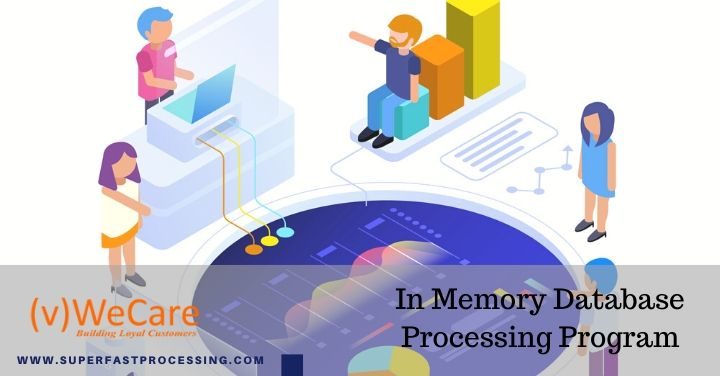Database processing is a key area of interest for companies looking to maximize data value in today’s context. Everything revolves around data nowadays and it can provide significant advantage when you are competing in choked markets. To maximize the potential of data for your business, real-time data stream processing is needed. And, for effective next-gen real-time insight derivation from large databases, you need an in memory database processing program.
The Importance of In Memory Database Processing
In the past, processing was done solely on the data stored in the hard disk. Although this type of processing was accurate and efficient in terms of cost, it wasn’t the best in terms of speed. As the time it takes to fetch data from a hard disk and onto the RAM is considerable, the overall results in terms of real time processing are not great. Contrast this with in memory database processing that involves storage of data on the RAM itself, the results are particularly inferior. Below are some reasons why in memory data processing has become increasingly important:
- In the traditional approach of storing data on the HDD, a lot of space is wasted as the data stays dormant before any computation or analysis can be performed on it. As new business use cases like Big Data analytics require processing of constant streams of data, it is likely that data warehouses may run out of storage, which may necessitate additional storage. A robust in memory database processing program addresses this problem by processing the data at the time it is ingested, thereby negating the need for large storage media.
- When it comes to Business Intelligence (BI), the cost of BI tools is considerably higher than in-memory processing solutions. Therefore, an in memory database processing program becomes a cost-efficient alternative to the traditional processing solutions.
- In the times of 32-bit systems, the amount of RAM that could be installed and used by an OS was really low (under 4GB). However, nowadays, we have access to 64-bit operating systems that can exploit large amount of RAM to expedite the data fetching tasks. Hence, it becomes all the more logical to use this increased capacity for enhancing the quality of the processing tasks.
The Pressing Need to Employ Superfast Processing Services
Superfast processing solutions that are based on the cloud provide a great way to fulfill the computational requirements of a business operation. To reap maximum benefits out of data stream processing, it is essential to find a partner that can offer you:
- High-Fault Tolerance – Apart from the speed of processing, you need a server with high fault-tolerance and self-recover to ensure consistency in processing a variety of applications.
- Horizontal Scalability and Load Balancing – When the load on the server exceeds a threshold value, the server should be able to handover the processing tasks to the next server, which is called load balancing. By implementing horizontal scalability, the data stream processing takes place flawlessly and you receive constant insights without any disruption.
- Redundancy – By sharing the data across multiple servers, it becomes easier to safeguard it against natural or human-inflicted disasters. A cloud-based superfast processing platform makes your operations more dependable and bolsters the safety of the data.
Superfastprocessing is an exceptional platform for delivering dependable processing services, especially for data stream processing. It has a team of 100+ engineers, which include software developers, DBAs and administrators.

